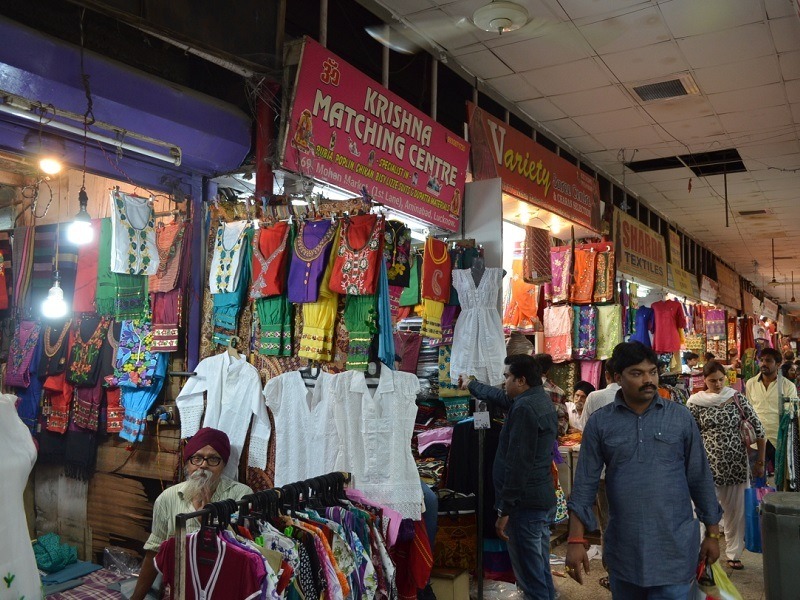Why Lucknow Old Market Still Matters in a Modern World

Lucknow Old Market
With air-conditioned malls, one-click shopping apps and mindful branded stores commonplace now, Lucknow Old Market continues to excite! Whether we’re traversing the busy lanes of Chowk, the seemingly never-ending walk around Aminabad, or strolling through Hazratganj, the messaging remains the same. The old market still holds a position in the identity of this city. The marketplaces are more than just shopping – they signify the cultural heart of Awadh.

Why do markets like Lucknow Old Market even matter in the speed of modernization? There are many reasons, all coming from a place of heritage, history, community and experiences that modern conveniences simply cannot facilitate.
A Window into Nawabi Heritage
The Lucknow Old Market is more than a place to make purchases. It is a living embodiment of the city’s history and heritage as an erstwhile royal seat. Chowk and Aminabad date back to the 18th and 19th centuries, when they were bazaar centers under the erstwhile Nawabs of Awadh. Chowk even today is home to traditional karkhanas, where talented artisans work at their age-old crafts.
Hazratganj developed during British rule, and with its colonial buildings, characterized by leisurely shopping, still holds relevancy. It is common for locals to describe going for a walk in Hazratganj as a “ganjing” experience — an experience of people-watching, window shopping, and snacking on the street. This is the vibrancy of Lucknow’s Old Market, and this is where Lucknow’s history comes to life.
Handcrafted Traditions Remain Strong
One aspect that is quintessentially tied to Lucknow Old Market is its dedication to the craftsmanship of handmade products. From chikankari to zardozi embroidery, artisans in Chowk and Aminabad engage in hand making products. This embroidery is well known across India and recognised as a GI-tagged art form for the region.
In many Lucknow households, women do chikankari embroidery as a financial contribution to the family while the men perform the finishing, the dyeing, and sales. The Lucknow Old market providers a venue for artisans to showcase their products, establish a reasonable price and maintain direct contact with their customers.
Affordable Shopping for All Budgets
Perhaps one of the best things about shopping in the Lucknow Old Market is it’s price range and variety. You can spend ₹200 for a typical cotton kurta, or ₹20,000 for an elaborate bridal lehenga; in a couple of shops from each other. This vast price range allows individuals with different economic capabilities to shop without hesitation.
The tradition of bargaining is still alive in these markets. It provides an opportunity that no e-commerce site can replicate, making it an interactive shopping experience. Oftentimes, customers return to the people they have a relationship with and these are not one-time customers, but a principle of trust with fair prices.
More Than a Buy: A Sensory Experience
Shopping in the Lucknow Old Market is not about shopping at all. It is an experience. There are the sounds of offers from vendors, the smell of street food such as samosas and jalebis, the colors of hand-dyed cotton and fabric, and the details of handmade jewelry to take in. The omnipresent atmosphere of the Old Market is a feel you won’t forget.
It is not like online shopping when you only sense it through a screen and a click. These markets engage all five senses; many visitors enjoy walking through the narrow roads of the old market looking, touch, and sense the internal charm, with or without parameters of shopping.
A Place of Belonging & Identity
The Lucknow Old Market is interwoven into the fabric of the city’s social and emotional life. Families come to the Old Market to shop for festivals, wedding trousseau, or a Saturday outing. Every shop and corner is intertwined in a story of first buy, memory and of tradition.
For many residents, these markets have become a symbol of identity and belonging. Families have shopped from the same stores for generations and shared favorite tailors and places to eat, such as Tunday Kababi and Royal Café.
A Boost to the Local Economy and Cultural Tourism
Tourists in Lucknow often make a beeline for the old markets. Chowk is known for its authenticity chikankari, its handmade ittar (natural perfumes), and its traditional jewelry. Travel guides and walking tours proclaim that the old markets are not just shopping destinations, but cultural experiences.
The Lucknow Old Market has a vital role in the informal economy of the city. It creates jobs, supports artisans, and puts money into the pockets of small business owners. When major festivals like Eid or Diwali happen, these markets gain an economic boost, positively impacting thousands of families.
The Old Market blends Tradition and Contemporary
Despite their historical roots, Lucknow Old Market certainly isn’t behind the times. You will find shopkeepers using digital payments, posting on social media to market their products, and doing deliveries. These shops have established WhatsApp ordering, Instagram collection showcases and collaborations with design professionals to create contemporary styles while honouring traditional craft.
The balance of tradition and modernity is built-in to the old markets and it helps them to remain relevant without losing their essence.
Final Thoughts
The Lucknow Old Market is not just about products and pricing. It is about culture, identity, community, and continuity. Yes, malls may be convenient and deliver homogeny. But they cannot provide the personas which these old markets offer.
In this fast-paced world, Chowk, Aminabad, and Hazratganj provide landmarks where we are grounded. They frame our understanding of who we are, where we come from, and what is important.
So next time you are in Lucknow, get off the mall track. Stroll through the Lucknow Old Market. You will not only find beautiful things but enjoy the social service connection to the city.




